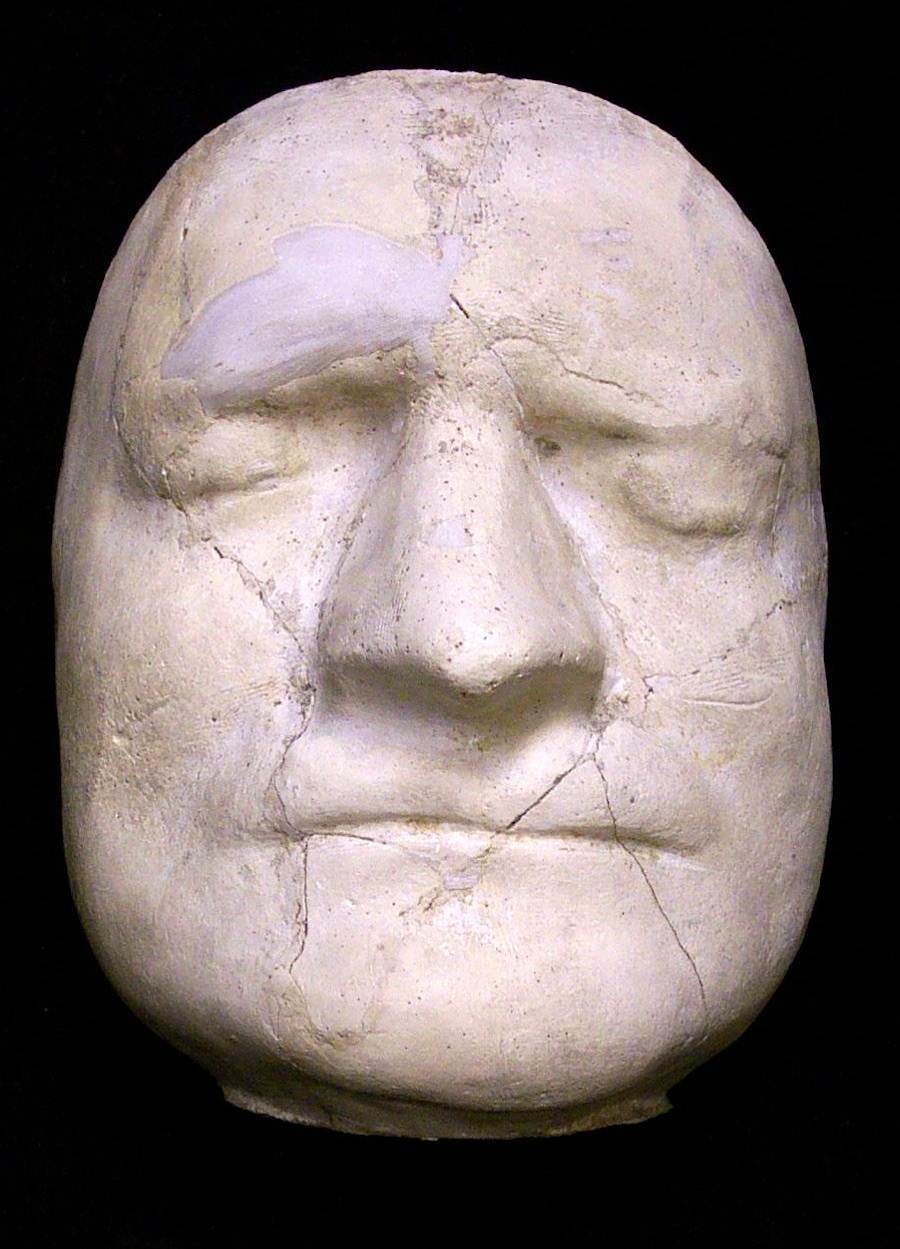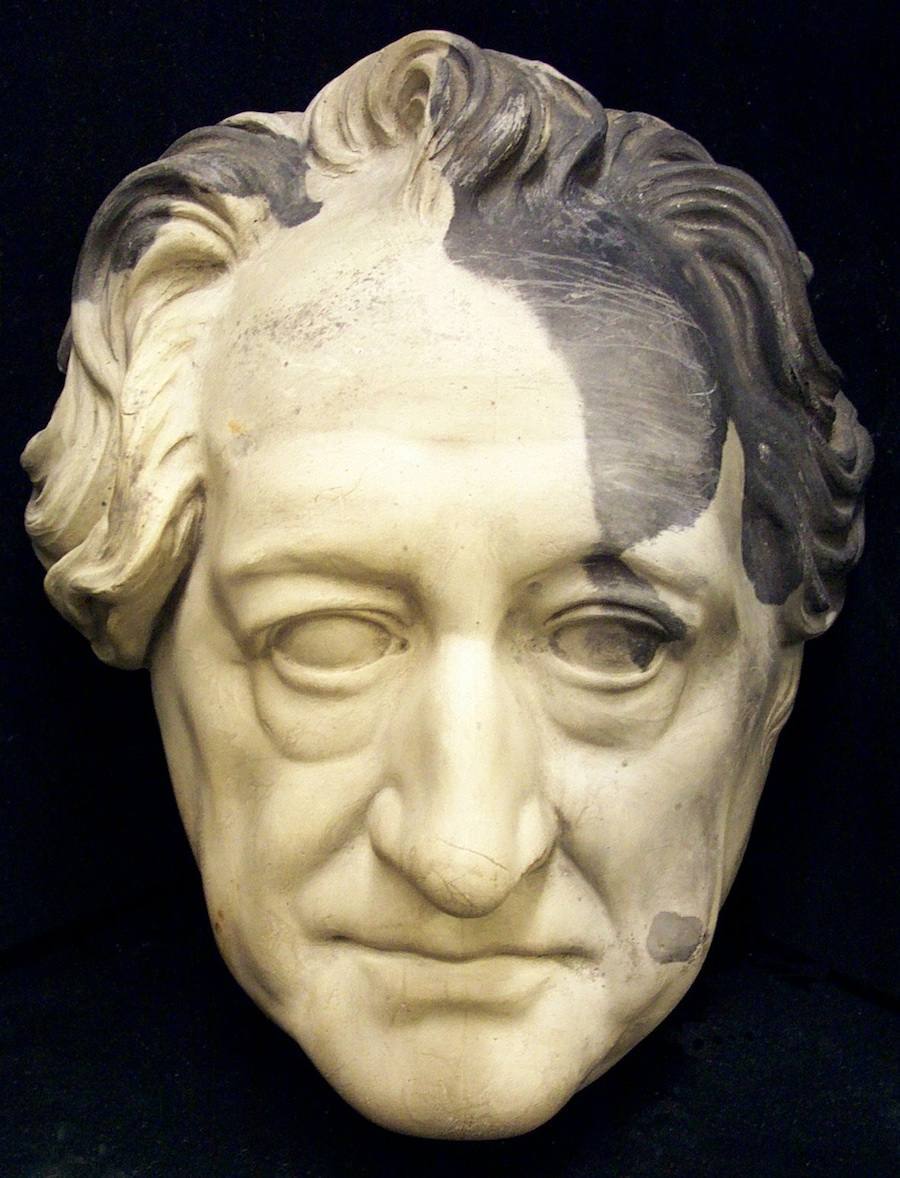
Johann Wolfgang von Goethe (1749-1832) death mask found in the ruins of Frankfort-am-Main after the Second World war.
Ker-Blam! A gazillion images are uploaded onto the weird and wonderful web.
Ka-Zonk! There goes another bazillion. In just one day there are more images uploaded than all the pictures produced during the whole of the 19th century.
Ka-Zam! A hundred years compressed into a single day. And what does this tell us?
The paintings, sculptures and drawings of the 1800s, 1700s and so on, primarily depicted the story of one section, one class of society, from which it is still possible to limn the shared, universal, cultural, social, religious and philosophical ideas prevalent at the time which have gone on to shape our world.
Today anyone can share their life history or personal preoccupations through social media. Though certainly having its benefits it does mean we have to wade through innumerable selfies, 3am snaps of befuddled naked z-list celebrities and cats that look like Adolf Hitler to find something of lasting cultural importance. This flood of images is creating a new way of communicating, but one that needs to be filtered, contextualised, explained to have any lasting merit.
To put it into blogspeak: In the 19th century nearly all images were filtered (because they cost so much) before being produced. Portraits were commissioned by those who could afford them–the church, the wealthy, the ruling elite, the Empire. Landscapes were usually chosen for prestige–for cultural, historical, symbolic, moral or religious significance–though often nothing more than yon romantic idyll.
But it wasn’t just paintings. One of the more interesting though perhaps strangely ghoulish method of representation from the 1700s on was the life or death mask of the great, the good and the downright infamous. These masks were a way to preserve a true likeness for posterity. Cast in plaster or wax, the finished mask was used as a basis for when producing a statue or relief. The selection process was high–no gym bunnies or beefcake bozos here–just the elite of writers, artists, composers, scientists, philosophers, politicians, royalty and religious leaders made the grade.
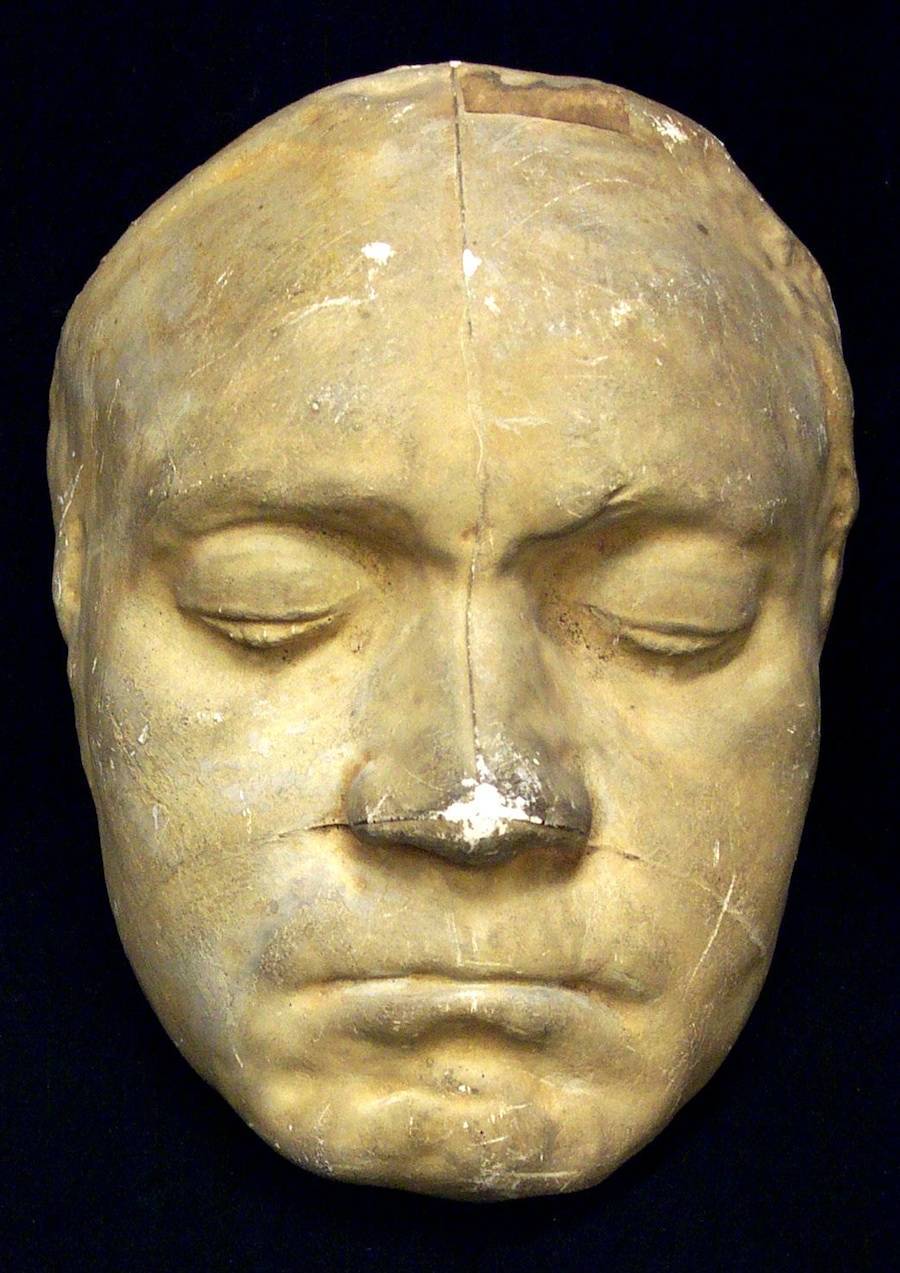
Ludwig van Beethoven (1770-1827).
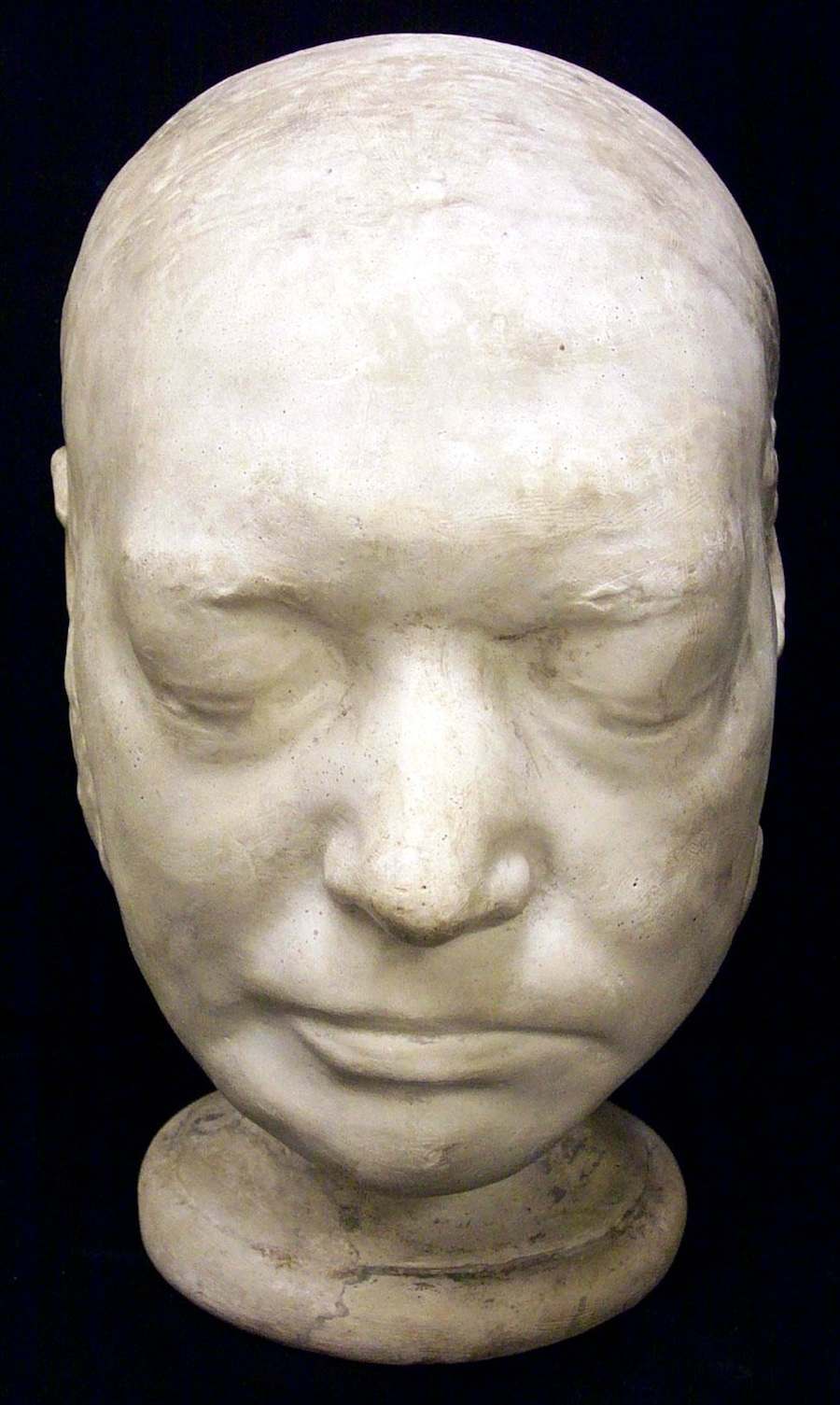
The poet Samuel Taylor Coleridge (1772-1834).
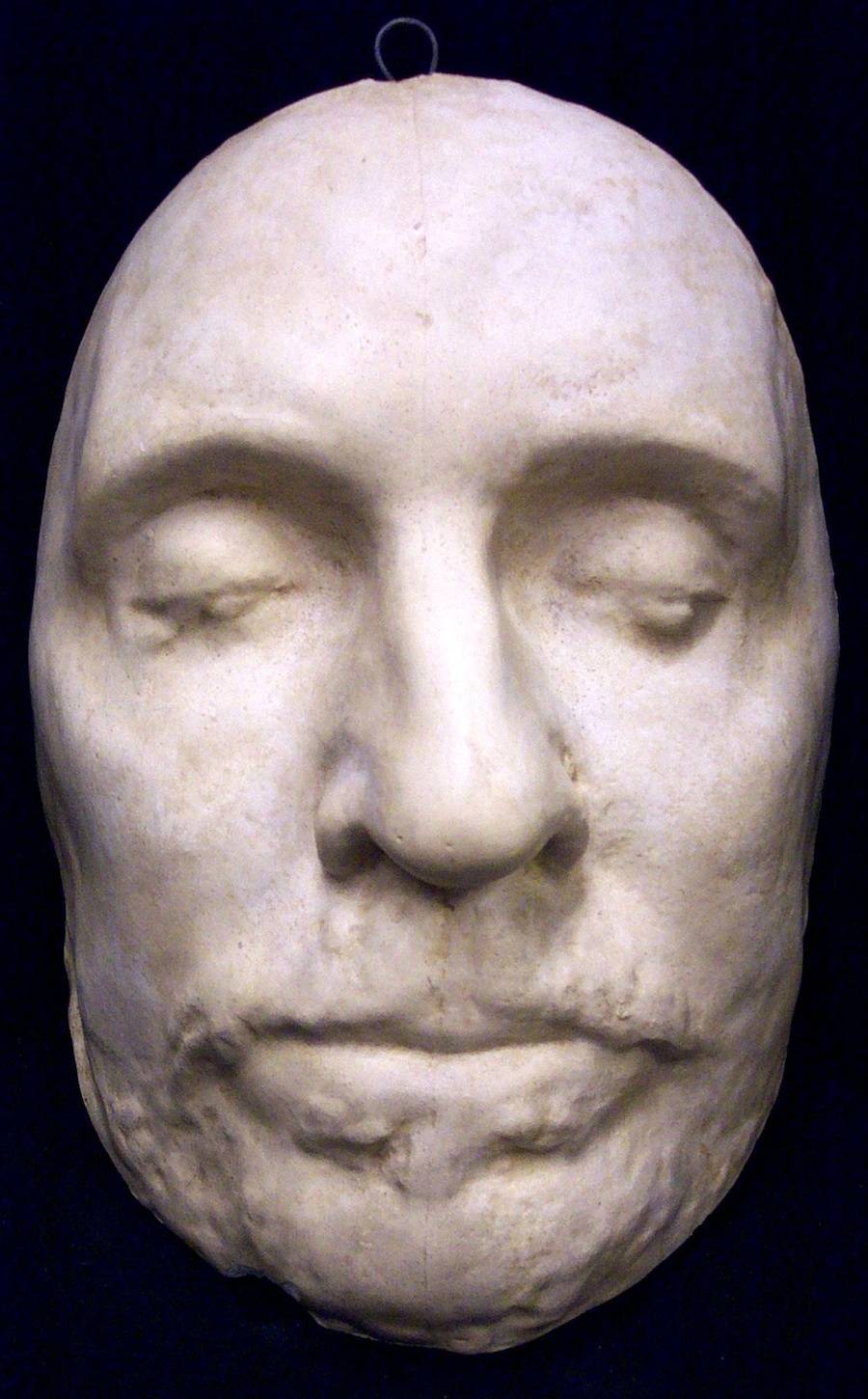
The infamous and brutal political and military leader Oliver Cromwell (1599-1658).
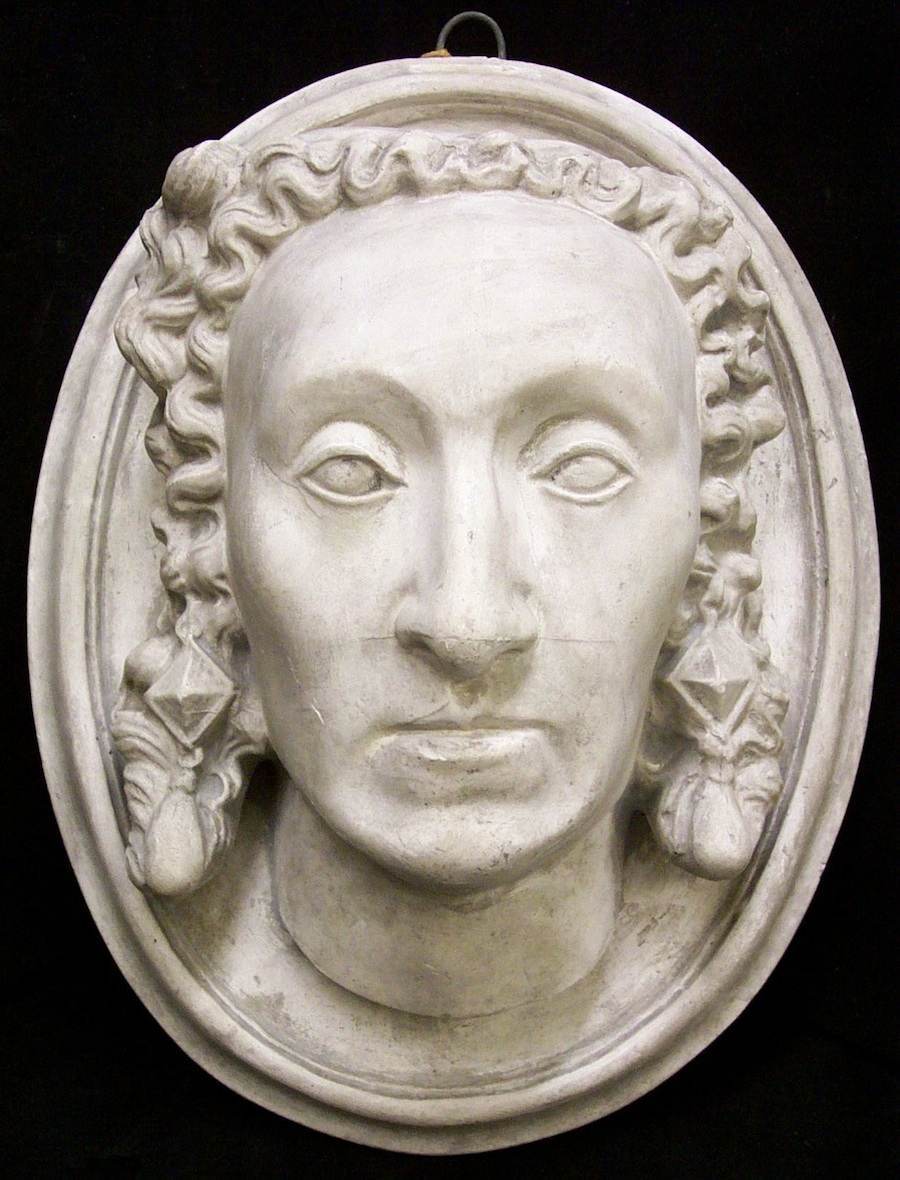
Effigy of Queen Elizabeth I (1533-1603) taken from her death mask.

This is a life mask taken of Benjamin Franklin (1706-1790).
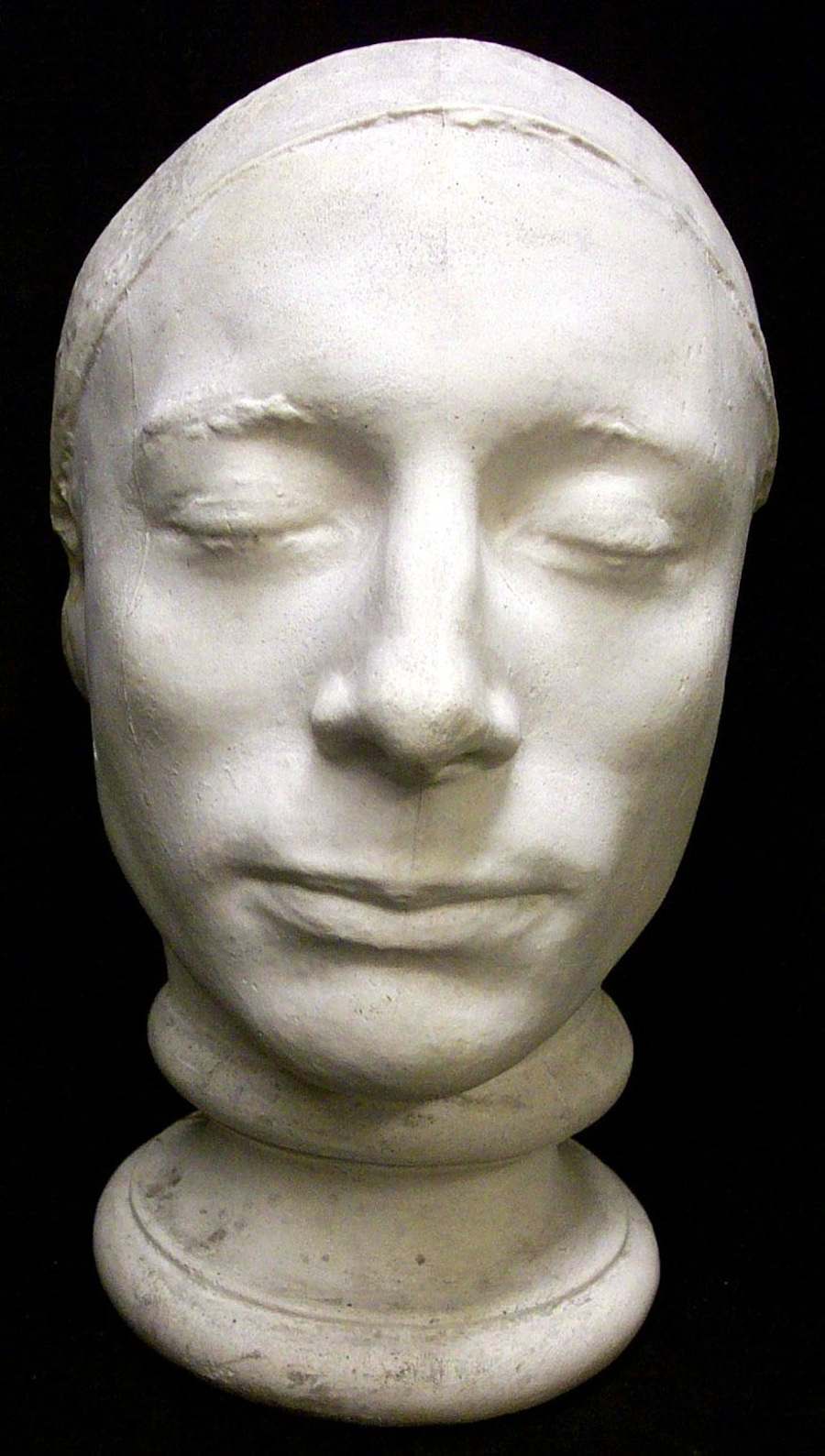
Another life mask of Romantic poet John Keats (1795-1821) probably made by artist Benjamin Haydon.
Can death be sleep, when life is but a dream,
And scenes of bliss pass as a phantom by?
The transient pleasures as a vision seem,
And yet we think the greatest pain’s to die.
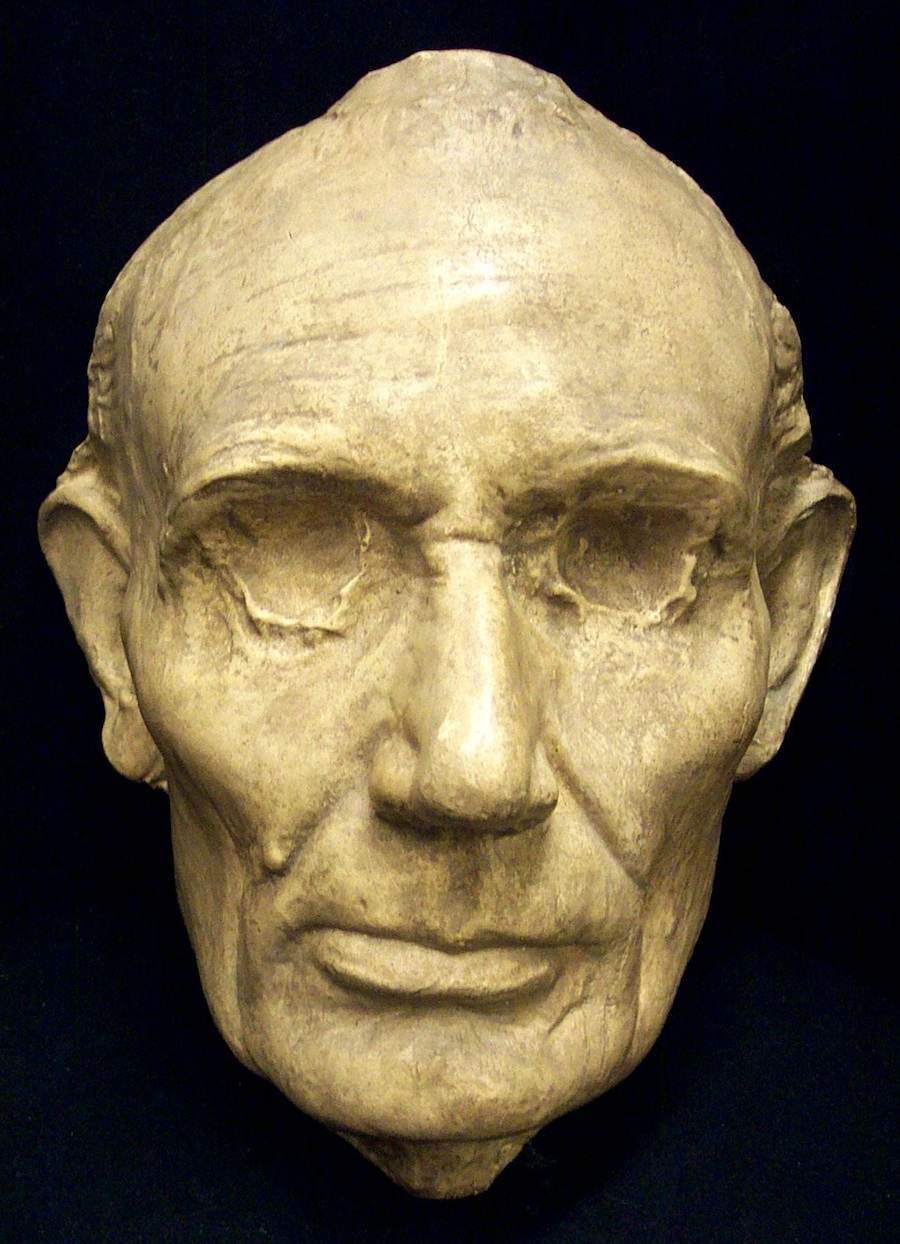
The life mask of American Republican President Abraham Lincoln (1808-1865)–note the holes where the eyes were left uncovered.
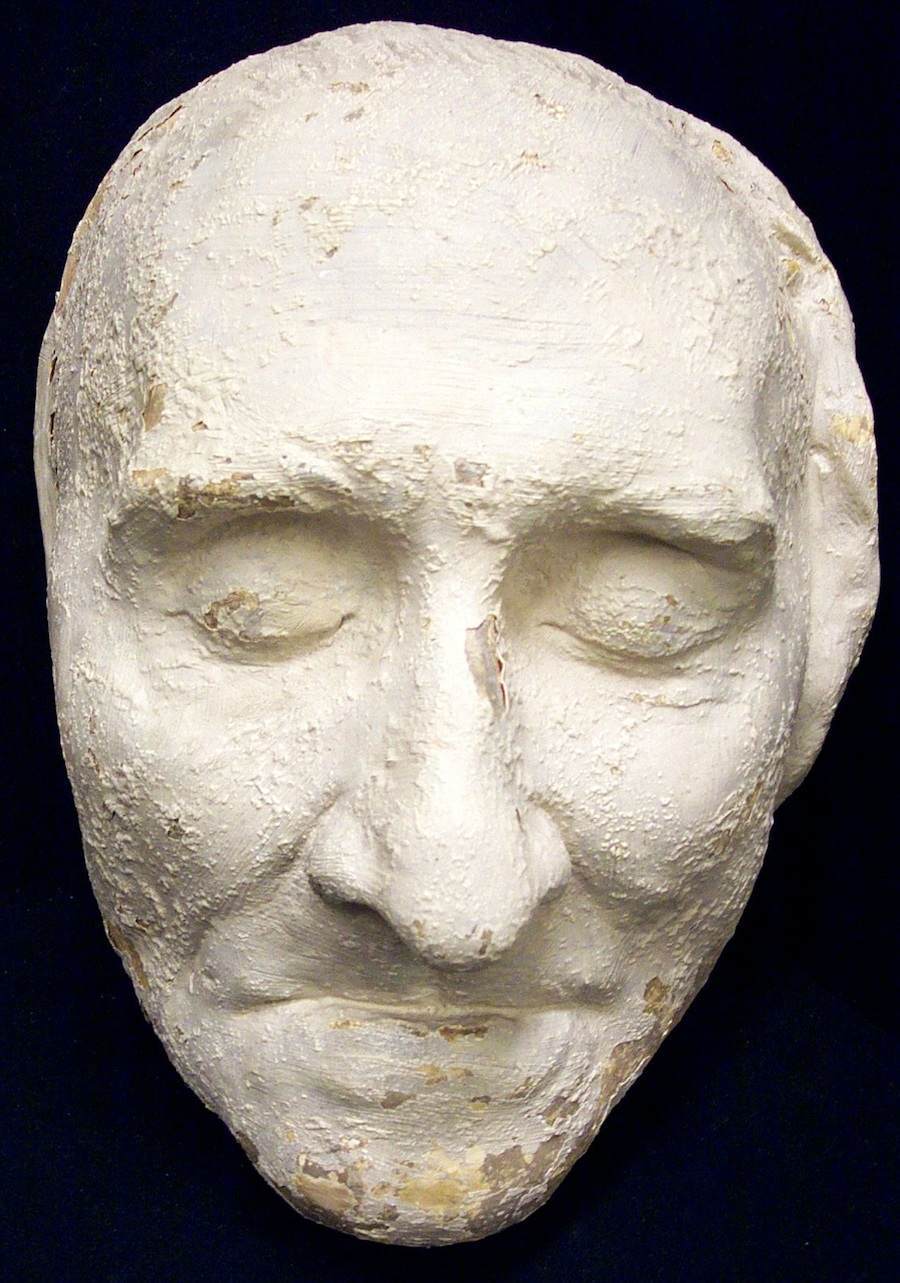
Death mask of composer Franz Liszt (1811-1886).
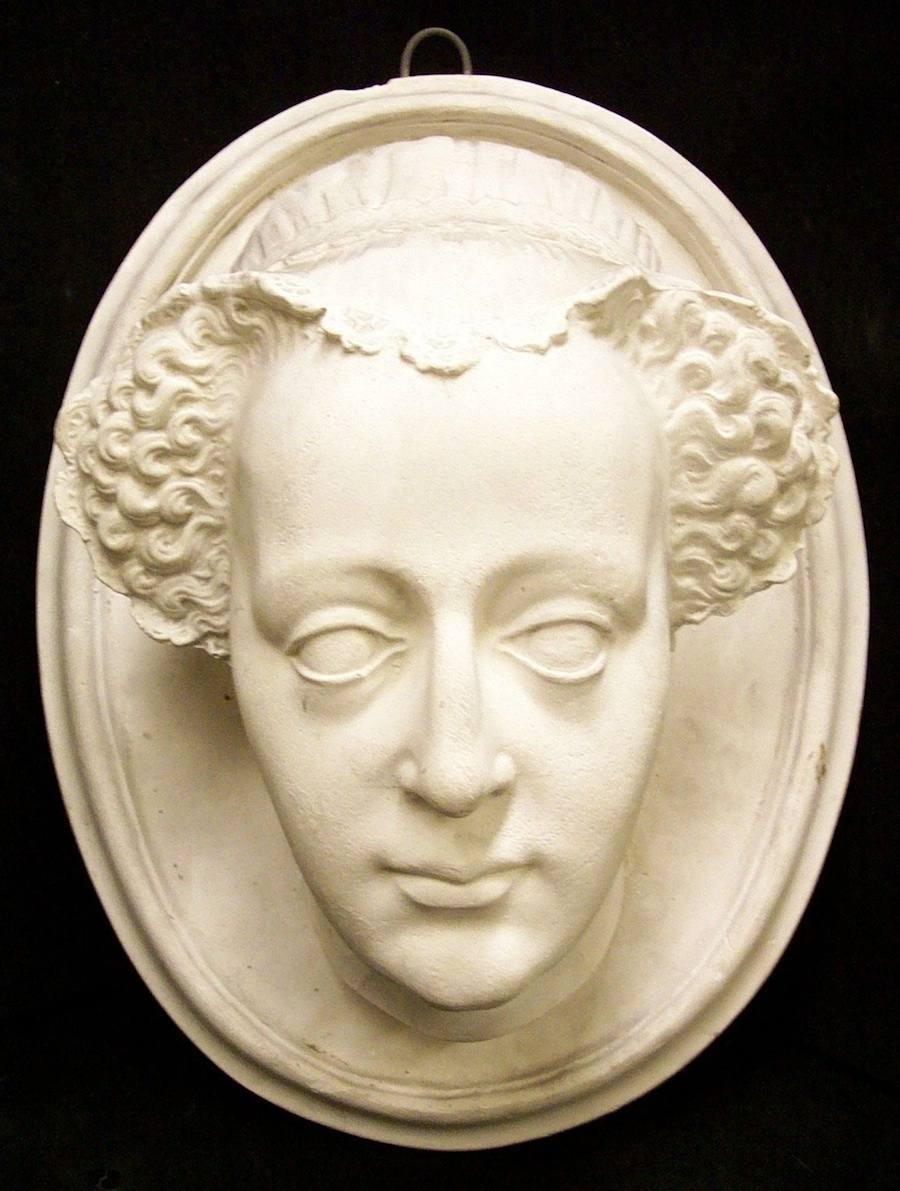
Mary Queen of Scots (got her head chopped off) (1542-87) death mask on effigy from her tomb.

Death mask of composer Felix Mendelssohn (1809-1847).
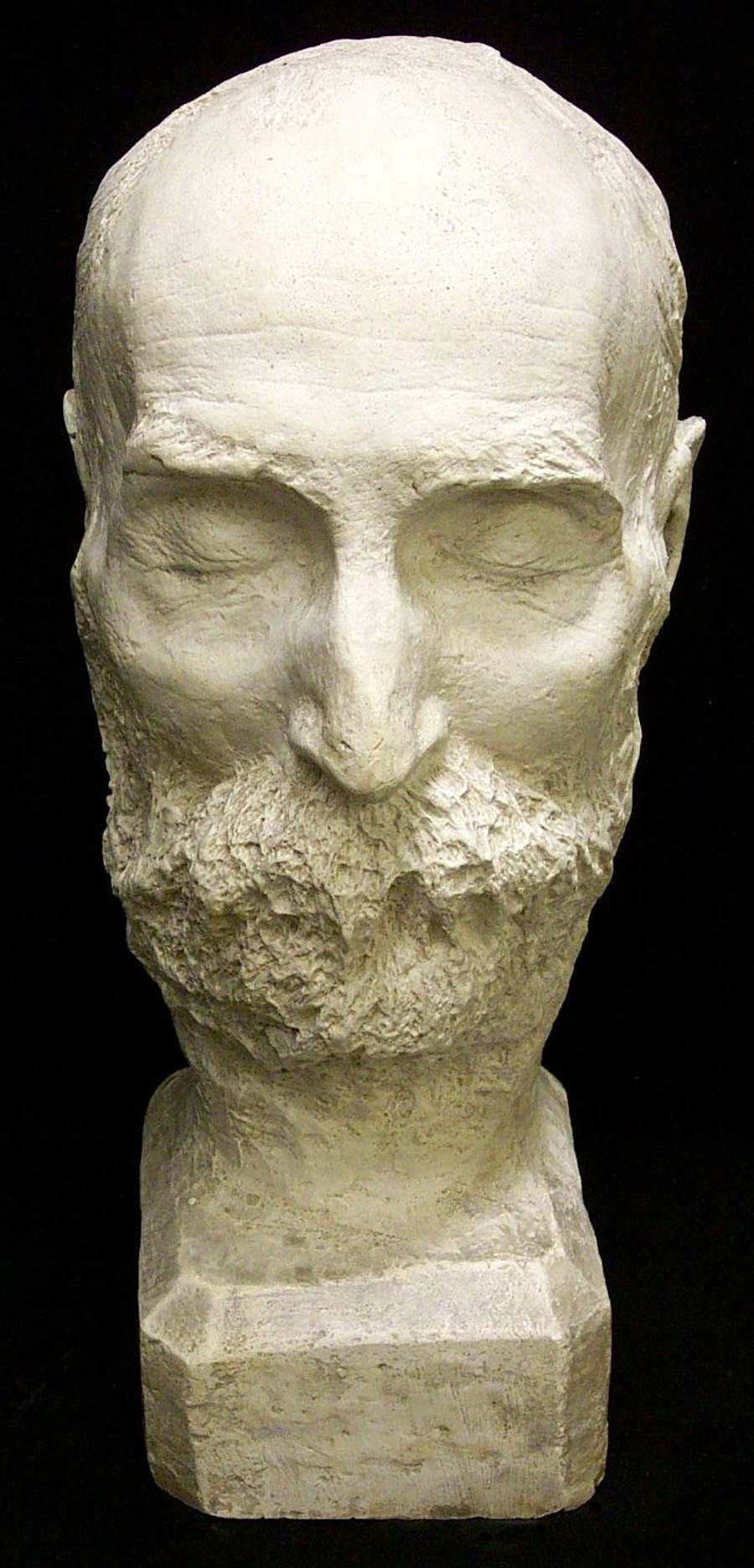
Original death mask of poet Walt Whitman (1819-92).
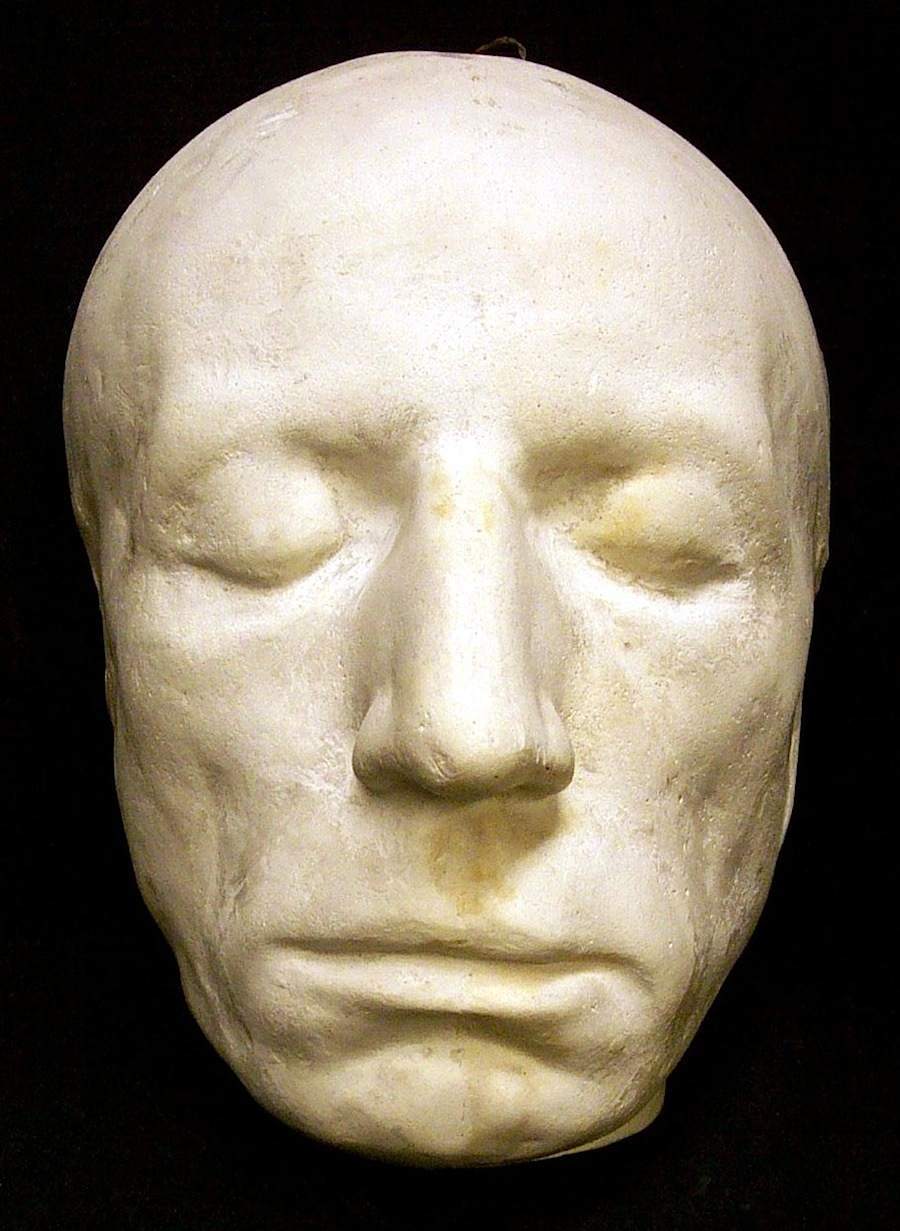
Life mask of Romantic poet William Wordsworth (1770-1850).

Death mask of writer Sir Walter Scott (1771-1832).
Would you like to support Flashbak?
Please consider making a donation to our site. We don't want to rely on ads to bring you the best of visual culture. You can also support us by signing up to our Mailing List. And you can also follow us on Facebook, Instagram and Twitter. For great art and culture delivered to your door, visit our shop.
